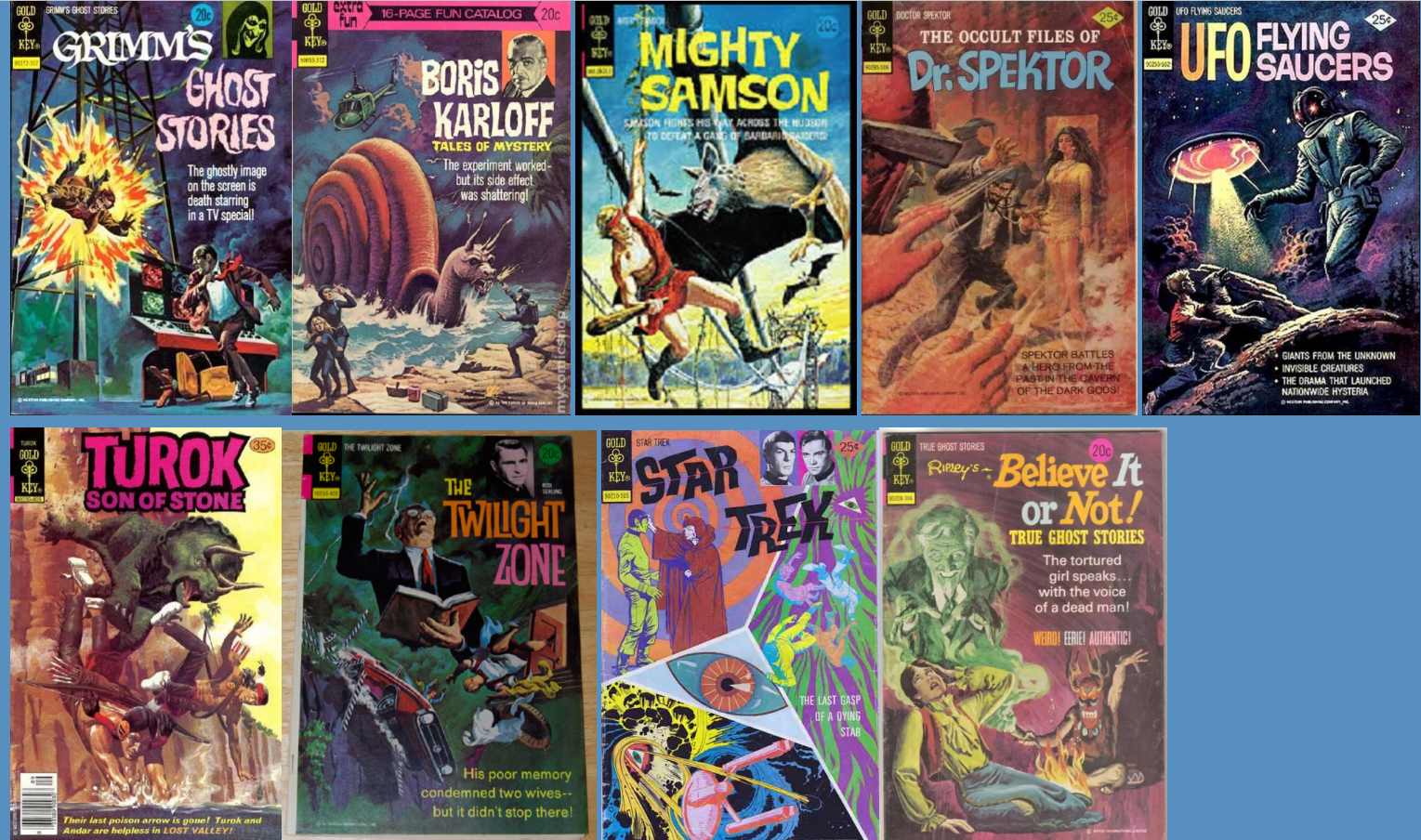Gold Key's "UFO Flying Saucers"

The Gold Key "UFO Flying Saucers" comic book series launched in October 1968 and ran 25 issues until February 1980, although the title was changed to "UFO & Outer Space" with issue #14 on June 1978.
Heritage Auctions has all the covers listed here and here, and you can read entire issues on archive.org, although I'm not sure I'd recommend it. The interior stories and art have a ripped-from-the-headlines charm, but we're not talking Jack Kirby or Carl Barks here. What I really find endlessly appealing about this series is the cover art.

As one online retrospective puts it:
"Gold Key Comics is renowned for its beautifully painted covers, which stood out on the spinner racks next to the competition’s comics. UFO Flying Saucers is a perfect example as to why this strategy often led kids to buying a Gold Key title over a Marvel, DC, Charlton, or Dell comic book. With fantastic covers showing giant spaceships emerging from the ocean, explorers discovering the remains of ancient astronauts, and people trying to escape menacing aliens – some covers in the latter style beg the question, why were so many smartly dressed women running around farmlands at night in high heels? – UFO Flying Saucers offered many eye-catching reasons to spend allowance money on it rather than, say the latest issue of Where Creatures Roam, The Many Ghosts of Doctor Graves, or Bat Lash."
These cover paintings are always colorful and clean in a cartoon-friendly way, while depicting big high-concept alien encounters like those mentioned in the above paragraph. Aliens might be giant airborne jellyfish –
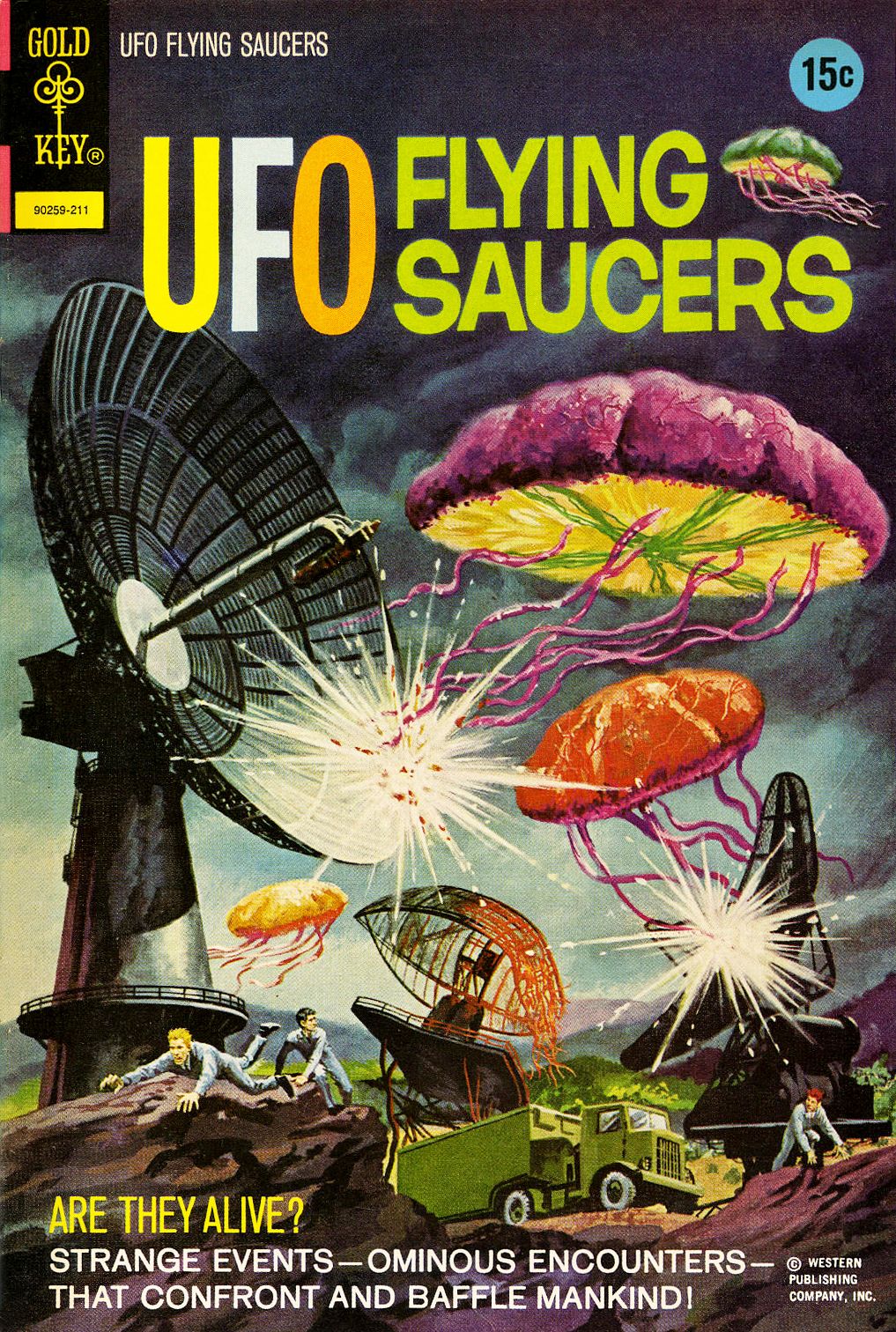
– or webbed intruders in cornfields.
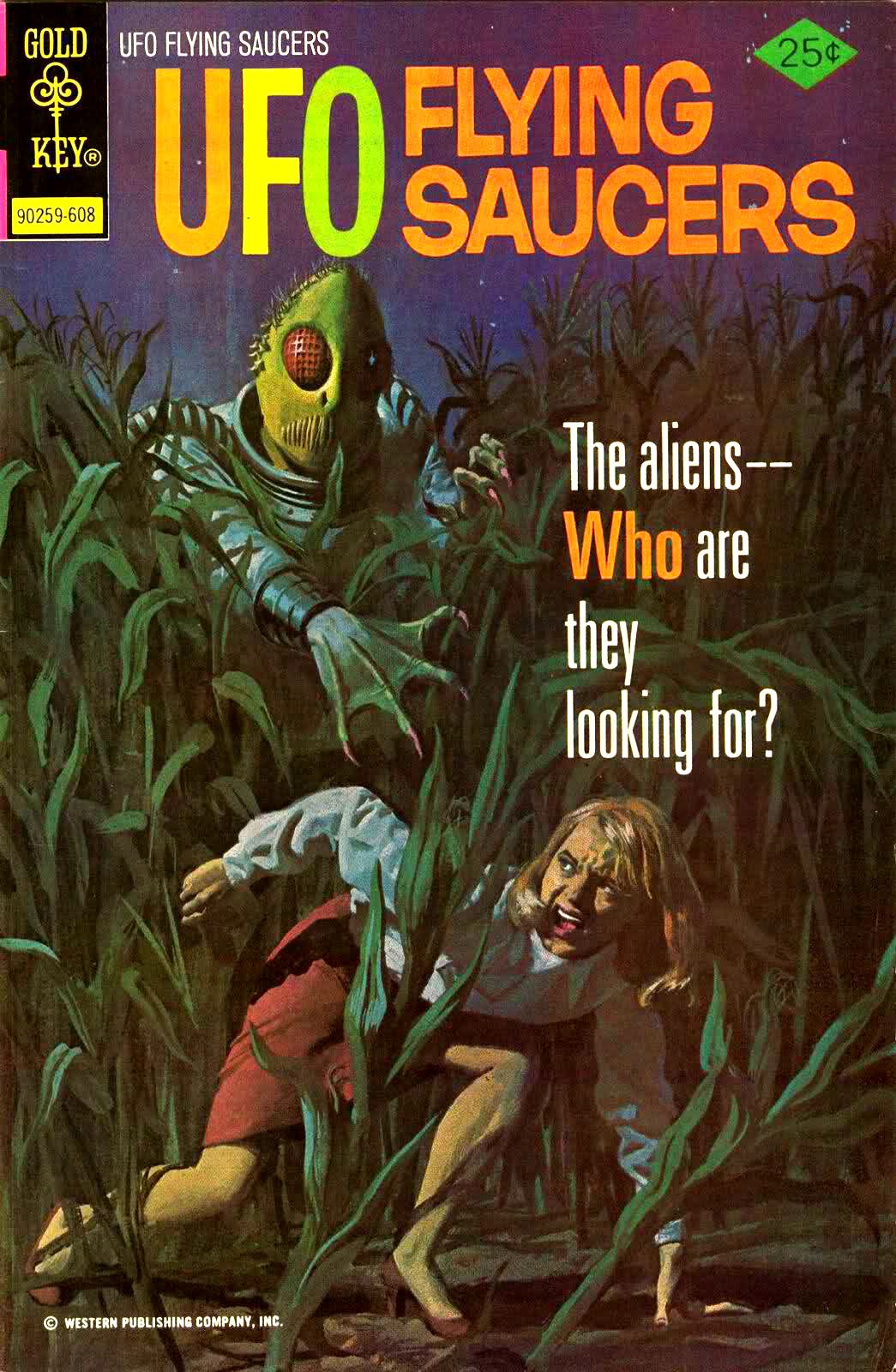
But these covers stand out for the extra terror that the humans were often expressing – there's a horror element buried in the core of these stories about sensationalized real-life encounters. You won't find that visceral fear in most of the 70s sci-fi art I focus on.
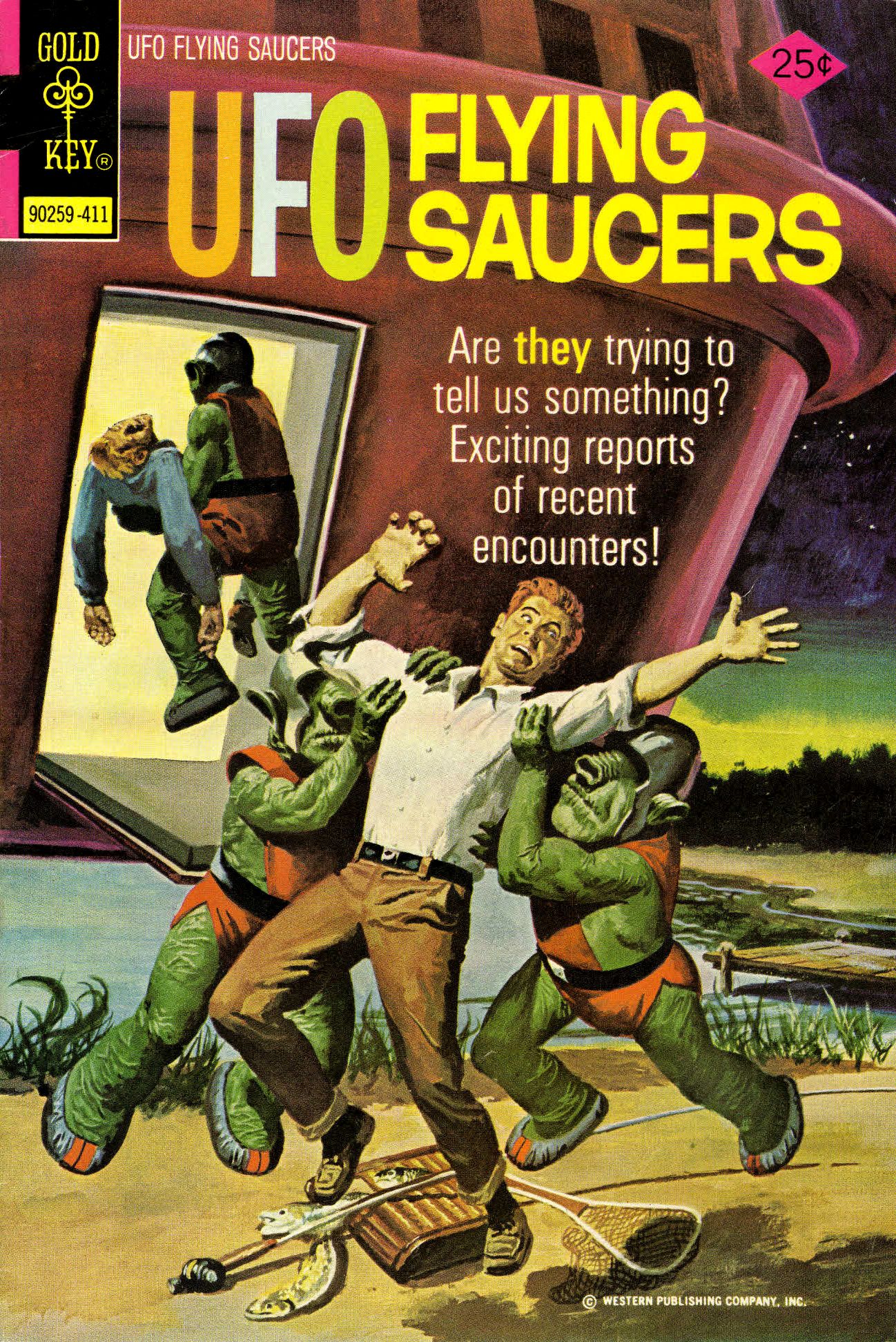
George Wilson did a lot of the covers, but Argentine artist Luis Dominguez did a handful, and in later years, other artists checked in to do one or two, including Mel Crawford, Chuck Liese, and even Richard Powers.
Here's a delightful pulp adventure setting with aliens as ancient tombs, likely by Luis Dominguez, for issue #19 on January 1979.

I say "likely" because Gold Key wasn't huge on crediting artists at the time, and it's not always clear who did what cover, even given the many decades we've had to piece the information together since.
In fact, the artist behind my very favorite cover, for issue #5, is in some doubt. It's either George Wilson or Luis Dominguez. The artwork was retouched and reused for issue #16 (this was done with two other early covers, both by George Wilson).

My favorite version of the cover is this admittedly pretty garish extra-saturated version by this blogger.
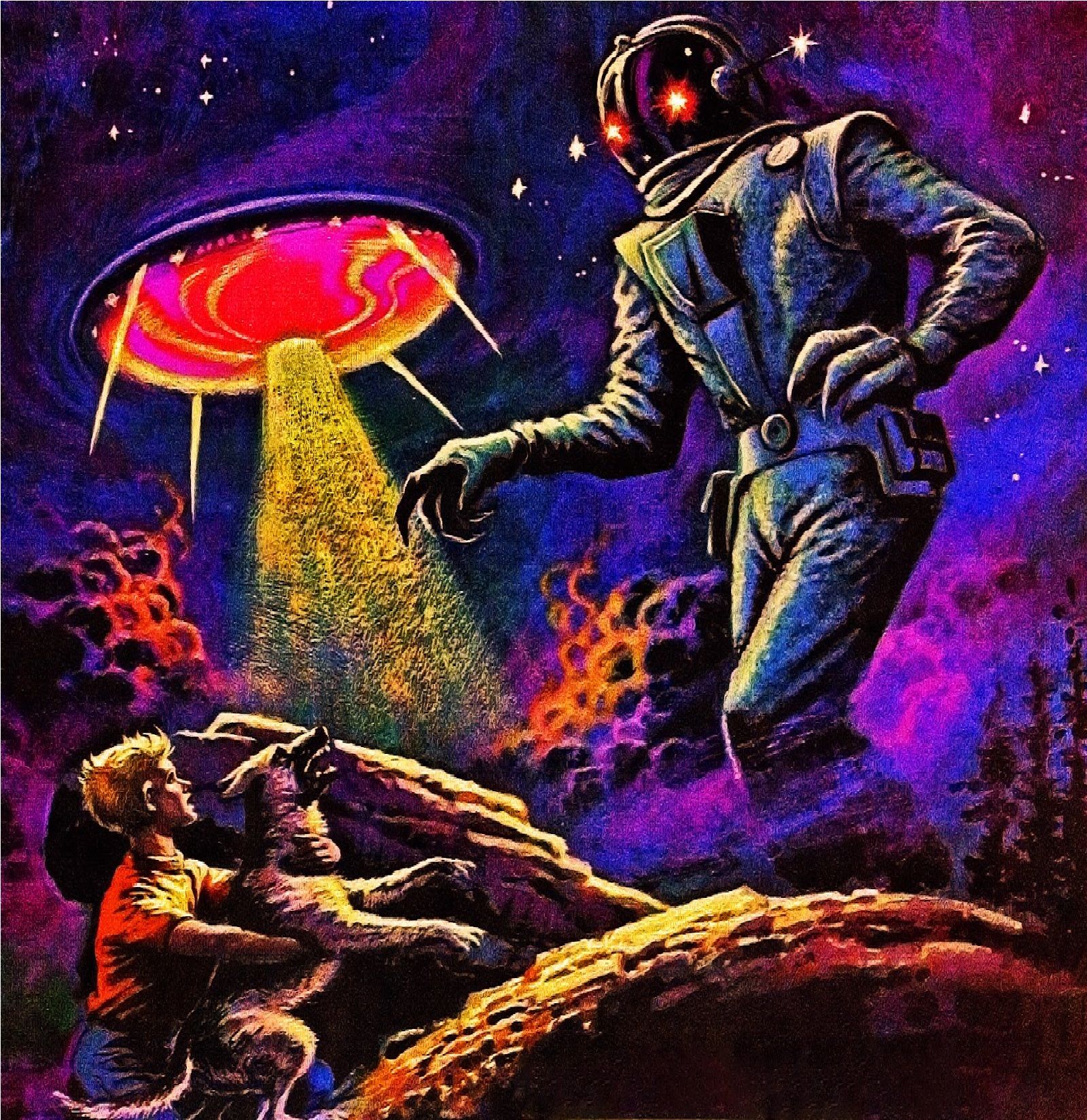
The retouched version above includes a note saying both the original and the retouched version are by Dominguez, but this Heritage Auctions entry notes that two other critics say that the original looks like Wilson's work.
Personally, I can't tell. It reminds me a bit more of Wilson's style, but I wouldn't want to take my word for it. And "kids running into alien at night" definitely isn't outside of Dominguez's wheelhouse, given this beautifully atmospheric undated painting from the guy:

Another another cover I really like, issue #9 and likely by Luis Dominguez. The mad scientist angle is another brassy pulp trope, and the colorful, constantly questioning taglines are in top form.

The house style loosened up a little for this fun Richard Powers cover for issue #17:

But the series never forgot its raison d'etre: Scaring little kids with the idea that an alien could abduct them from their own backyard.

Once you're done scrolling through all the UFO covers, you can look up these other 1970s Gold Key titles, all of which took the same "beautiful cover painting" approach.
